Prescribed drugs and cutaneous melanoma
Project
|Last update
In this project, we examine whether some of the most commonly used groups of medications can increase the risk of developing melanoma by affecting the immune system or our sensitivity to UV rays.
Background
Melanoma is one of the fastest-growing cancer types in Norway, with its incidence having doubled since the year 2000. The incidence of melanoma in Norway is among the highest in the world, and the country also has the highest mortality rate from this cancer in Europe.
The primary risk factor is intense ultraviolet (UV) radiation from the sun, and sunbathing habits within the population are likely the main driver of the significant increase in incidence. However, certain medications can affect the immune system and our sensitivity to UV radiation. Therefore, the use of such medications may also impact the development of melanoma. The relevant medication groups include immunosuppressive, antidepressant, and antihypertensive drugs. The number of individuals using these medications is increasing, with over 100,000 Norwegians using immunosuppressive drugs in 2015, around 300,000 using antidepressants, and over 800,000 using antihypertensive drugs.
Purpose and study design
Based on data from national registers (Population Registry, Cancer Registry, and Prescription Registry), this study investigates whether the use of these three medication groups increases the risk of melanoma.
The study provides essential knowledge about risk factors for melanoma, which is crucial for targeted prevention by identifying individuals at risk. The results will also be important for ensuring the safe use of medications for individuals.
Subproject
A large European study reported in 2012 that depression and stress were associated with an increased incidence of melanoma. Biological effects of depression might promote cancer development. Conversely, laboratory studies have shown that antidepressants can inhibit melanoma development. Our study is the first observational study examining the association between the use of antidepressant drugs and melanoma risk. We found that high usage was associated with reduced melanoma risk for both genders and all age groups over 50 years. This was consistent for all melanoma types, local stages, and tumor locations on the trunk, arms, and legs. This finding could have at least two explanations: 1) Biological mechanisms induced by antidepressants inhibiting melanoma development, or 2) reduced UV exposure among those using these medications.
It is known that organ transplant recipients have an increased risk of skin cancer, particularly squamous cell carcinoma and basal cell carcinoma. We aimed to investigate whether all types of immunosuppressive drugs were associated with melanoma risk. We found that the use of immunosuppressive drugs was associated with a 50% increased risk of melanoma (all melanoma types). The highest risk was observed for drugs used after organ transplantation (doubling the risk). We found no association with the use of corticosteroids. These results indicate that users of immunosuppressive drugs may benefit from regular skin checks and should be particularly cautious with sun exposure.
Antihypertensive medications are the most frequently used drugs. Some of these have been observed to be associated with an increased risk of melanoma. In this study, we included all groups of antihypertensive drugs and found a slightly increased risk of melanoma for most of these drug groups. However, the associations were not strong enough to indicate increased UV sensitivity or other drug-related mechanisms.
In a French population-based cohort, we found no association between the use of statins and the risk of any skin cancer type. However, results from this Norwegian dataset suggest that high cumulative doses of statins may reduce the risk of melanoma, particularly in the head/neck region. These promising results may have clinical applications but need verification in other datasets.
Read more about the Cancer Registry of Norways research on prescription drugs.
About the project
Project group:
- PI: Trude Eid Robsahm, CRN
- Pdh-student: Leon Berge, CRN
- Bettina Andreassen, CRN
- Jo Stenehjem, CRN
- Inger Kristin Larsen, CRN
- Marit B Veierød, University of Oslo
- Kari Furu, Norwegian institue of Public Health
- Asta Juzeniene, Oslo University Hospital
- Ingrid Roscher, Oslo University Hospital
- Trond Heir, University of Oslo
- Adele Green, QIMR Berghofer medical research Institute, Brisbane, Australia
Funding: This project is funded by the Southern and Eastern Norway Regional Health Authory
REC: The Norwegian regional committee for medical and health research ethics (REC) has approved the project (committee Southeast).

